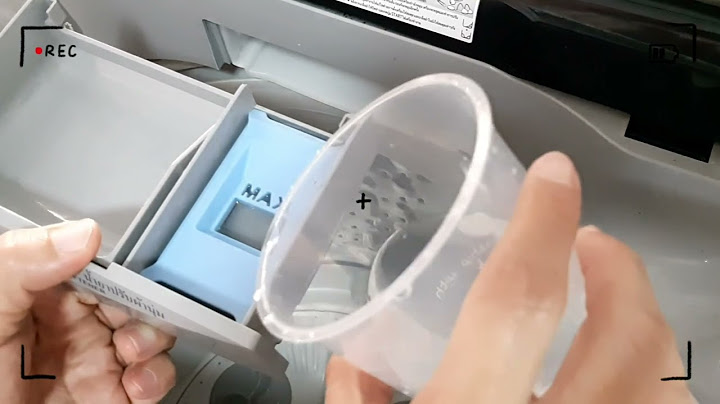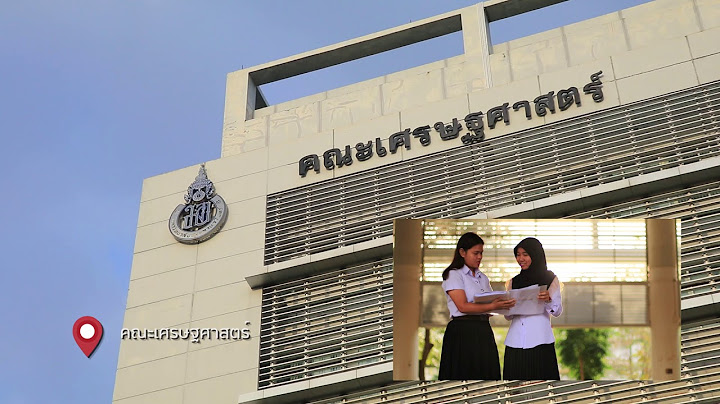มีเหตุผลมากมายที่จะอัปเกรดเป็น Windows 11 แต่นั่นไม่ได้หมายความว่าคุณต้องใช้งานอินเทอร์เฟซผู้ใช้ใหม่ทุกด้าน บางที เหมือนฉัน คุณไม่ชอบ Start Menu ใหม่เพราะมันกินเนื้อที่มาก หรือบางทีคุณอาจเกลียดความจริงที่ว่า File Explorer ไม่มีเมนูริบบอนหรือเมนูคลิกขวามีเพียง 7 ตัวเลือกและบังคับให้คุณคลิก”แสดงตัวเลือกเพิ่มเติม”เพื่อดูทั้งหมด Show ข่าวดีก็คือว่า ด้วยการผสมผสานระหว่างการปรับแต่งรีจิสตรี แอพของบริษัทอื่น และงานศิลปะบางอย่าง คุณสามารถรับรูปลักษณ์และความรู้สึกของ Windows 10 กลับมาใน Windows 11 ได้ แต่ข่าวร้ายก็คือ Microsoft ไม่ต้องการให้คุณไป กลับไปที่ UI ก่อนหน้า ดังนั้นจึงอาจปิดใช้งานการแฮ็กรีจิสทรีที่คุณใช้ในการอัปเดตในอนาคต และนี่คือการแฮ็กสำหรับระบบปฏิบัติการเบต้าที่มีการเปลี่ยนแปลงบ่อยครั้ง ดังนั้นจึงไม่มีการรับประกันว่าคุณจะไม่พบข้อบกพร่อง ดำเนินการด้วยความเสี่ยงของคุณเอง ด้านล่าง เราจะร่างการปรับแต่งจำนวนหนึ่งสำหรับส่วนต่างๆ ของ UI และคุณสามารถใช้อย่างใดอย่างหนึ่ง หลายอย่าง หรือทั้งหมดเพื่อให้ได้รูปลักษณ์ที่คุณต้องการ น่าเศร้าในขณะนี้ ไม่มีทางที่จะนำเมนูเริ่มของ Windows 10 กลับมาได้อย่างแน่นอน อย่างไรก็ตาม คุณสามารถติดตั้งยูทิลิตี้ของบริษัทอื่นได้อย่างน้อยสามตัวที่ให้การออกแบบเมนูที่คล้ายกับ Windows 7 ซึ่งในทางของตัวเอง จะใกล้เคียงกับรูปลักษณ์ของเมนูของ Windows 10 มาก ขึ้นอยู่กับว่าคุณปรับแต่งมันอย่างไร. และถ้าอย่างฉัน สิ่งที่คุณไม่ชอบมากที่สุดเกี่ยวกับเมนู Start ของ Windows 11 คือพื้นที่หน้าจอที่ใช้ไปและระยะห่างของไอคอน การใช้ยูทิลิตี้เหล่านี้เป็นวิธีแก้ไขที่ยอดเยี่ยม เรามีบทแนะนำโดยละเอียดเพิ่มเติมเกี่ยวกับวิธีเปลี่ยนเมนูเริ่มของ Windows 11 แต่เราจะสรุปขั้นตอนพื้นฐานไว้ด้านล่างด้วย ขั้นแรก คุณต้องเลือกยูทิลิตี้เมนูเริ่มที่จะติดตั้ง สามตัวเลือกหลักคือ:
หากคุณติดตั้ง Open-Shell และไม่ต้องการให้มีข้อบกพร่องที่คุณได้รับจากการนำแถบงานแบบคลาสสิกกลับมา ซึ่งทั้งหมดนี้เราจะได้รับ ด้านล่าง–สิ่งที่คุณต้องทำหลังจากตั้งค่าโปรแกรมคือเลื่อนไอคอนแถบงานไปทางซ้าย ในการทำเช่นนั้น เพียงคลิกขวาที่แถบงาน เลือกการตั้งค่าแถบงาน จากนั้นไปที่ลักษณะการทำงานของแถบงาน และ เลือกซ้าย จากเมนูการจัดตำแหน่ง ปุ่มเริ่มของคุณซึ่งดูเหมือนเชลล์ เว้นแต่คุณจะอัปโหลดปุ่มที่กำหนดเอง ปุ่มนั้นจะปิดทับปุ่ม Windows 11 และใช้งานได้. อย่างไรก็ตาม หากคุณต้องการใช้ Open-Shell และรับไอคอนปุ่มเริ่มของ Windows 10 ที่ถูกต้อง คุณจะต้องกู้คืนทาสก์บาร์แบบคลาสสิกของ Windows 10 และตั้งค่า Open-Shell ไม่ให้เป็น แทนที่ปุ่มเริ่ม แถบงานแบบคลาสสิกมีปุ่มเริ่มของ Windows 10 ดังนั้นจึงจะใช้ปุ่มนั้น รับ Classic Taskbar ของ Windows 10หากคุณต้องการประสบการณ์ที่เหมือนกับ Windows 10 มากที่สุด คุณสามารถนำทาสก์บาร์แบบคลาสสิกของ Windows 10 กลับมาได้ใน Windows 11.. อย่างน้อยก็ตอนนี้. คุณต้องใช้วิธีนี้ทันที หากคุณเลือกใช้ StartIsBack++ หรือ Start10 หรือหากคุณต้องการใช้ Open-Shell และรับไอคอน Windows 10 ที่ถูกต้องเป็นปุ่ม Start มีการปรับแต่งรีจิสตรีแบบง่าย ๆ ที่จะให้ทาสก์บาร์แบบคลาสสิกแก่คุณ แต่ก่อนที่เราจะไปที่นั่น ให้สังเกตข้อดีเสียก่อน อย่างแรก นี่คือการแฮ็กรีจิสทรีที่ Microsoft มีแนวโน้มที่จะปิดการใช้งานในบางจุด เนื่องจากบริษัทต้องการให้คุณใช้ทาสก์บาร์ของ Windows 11 อย่างชัดเจน ประการที่สอง ไอคอนบางไอคอนบนแถบนี้ใช้ไม่ได้และจำเป็นต้องซ่อนหรือปิดใช้งาน มีช่องค้นหาแต่การคลิกไม่ทำอะไรเลย และคุณอาจเห็นปุ่ม Cortana ที่ไม่ทำอะไรเลย ปุ่มมุมมองงานนั้นแย่กว่าไร้ประโยชน์เพราะมันหยุดทำงานเมื่อคุณคลิก ทำให้แถบงานซ่อนไอคอนของคุณเป็นเวลาหนึ่งหรือสองนาทีในขณะที่กู้คืน ดังนั้นคุณควรซ่อนไว้ด้วย เมื่อพิจารณาว่า Task View ของทาสก์บาร์และปุ่มค้นหาของทาสก์บาร์ของ Windows 11 ทำงาน ทำให้เกิดการสูญเสียฟังก์ชันการทำงาน อย่างไรก็ตาม คุณสามารถค้นหาได้โดยตรงจากเมนู Start แล้วกดแป้น Windows + Tab เพื่อรับเมนูมุมมองงาน ในด้านที่สดใส การเปิดใช้งานแถบงานแบบคลาสสิกยังช่วยให้คุณมีตัวจัดการไฟล์ Windows 10 กลับมาด้วย (ด้วย ribbon) และเมนูบริบทคลิกขวาของ Windows 10 อย่างไรก็ตาม หากคุณไม่ได้ใช้ทาสก์บาร์แบบคลาสสิก คุณสามารถกู้คืนได้ด้วยวิธีอื่น ซึ่งเราจะอธิบายในส่วนต่อไป นอกจากนี้ยังช่วยให้คุณสามารถปลดล็อกทาสก์บาร์และลากไปด้านข้างหรือด้านบนของหน้าจอได้ หากคุณยินดีที่จะเผชิญกับข้อเสีย นี่คือขั้นตอนในการรับทาสก์บาร์ของ Windows 10 ใน Windows 11. ตรวจสอบให้แน่ใจว่าแอปเมนูเริ่มต้นของบุคคลที่สามได้รับการติดตั้งแล้ว ก่อนดำเนินการตามขั้นตอนเหล่านี้ 1. เปิด Regedit คุณไปถึงที่นั่นได้โดยกดปุ่ม Windows + R แล้วพิมพ์ regedit ลงในช่อง run 2. ไปที่ HKEY_LOCAL_MACHINE\SOFTWARE\Microsoft\Windows\CurrentVersion\Shell\Update\Packages 3. สร้างค่า DWORD (32 บิต) ที่เรียกว่า UndockingDisabled และ ตั้งค่าเป็น 1 คุณสร้างค่าใหม่โดยคลิกขวาในบานหน้าต่างด้านขวาของ Regedit และเลือก New->DWORD (32-bit) Value จากนั้นเปลี่ยนชื่อรายการเป็นชื่อที่เหมาะสมแล้วดับเบิลคลิกเพื่อรับกล่องโต้ตอบค่า 4. ปิด Regedit และ รีสตาร์ท Windows ตอนนี้ คุณจะมีเมนู Start แบบคลาสสิกของ Windows 10 และหากคุณติดตั้งเมนู Start ของบริษัทอื่น เมนู Start ที่ใช้งานได้จะมีขนาดกะทัดรัดกว่า Windows 11 และมีฟังก์ชันการค้นหาในตัว <กำหนดข้อมูล-bordeaux-image-check> อย่างไรก็ตาม คุณจะสังเกตเห็น เนื่องจากนาฬิกา ตัวควบคุมระดับเสียง และไอคอนเครือข่ายหายไปจากด้านขวาของแถบงาน คุณจะต้องการเอาคืน 5. กดปุ่ม Windows + R แล้วป้อน shell:::{05d7b0f4-2121-4eff-bf6b-ed3f69b894d9} เพื่อเปิดแผงควบคุมการแจ้งเตือน 6. คลิก”เปิดหรือปิดไอคอนระบบ” <แหล่งข้อมูล ty pe="image/png"alt="คลิกเปิดหรือปิดไอคอนระบบ"class="lazy-image-van optional-image"onerror="if(this.srx && this.srx.indexOf('missing-image. svg') !==-1){return true;};this.parentNode.replaceChild(window.missingImage(),this)"sizes="(min-width: 1000px) 970px, calc(100vw-40px)"data-normal="https://vanilla.futurecdn.net/tomshardware/media/img/missing-image.svg"data-original-mos="https://cdn.mos.cms.futurecdn.net/P7zXCDFrg9d2W7jxvmdmpa.png"data-pin-media="https://cdn.mos.cms.futurecdn.net/P7zXCDFrg9d2W7jxvmdmpa.png"srxset="https://cdn.mos.cms.futurecdn.net/P7zXCDFrg9d2W7jxvmdmpa-320-80.png 320w, https://cdn.mos.cms.futurecdn.net/P7zXCDFrg9d2W7jxvmdmpa-650-80.png 650w, https://cdn.mos.cms.futurecdn.net/P7zXCDFrg9d2W7jxvmdmpa-970-80".png img srx="https://vanilla.futurecdn.net/tomshardware/media/img/missing-image.svg"alt="คลิกเปิดหรือปิดไอคอนระบบ"class="lazy-image-van optional-image"onerror="if(this.srx && this.srx.indexOf('missing-image.svg') !==-1){retur n จริง;};this.parentNode.replaceChild(window.missingImage(),this)"sizes="(min-width: 1000px) 970px, calc(100vw-40px)"data-normal="https://vanilla. futurecdn.net/tomshardware/media/img/missing-image.svg"srcset="https://cdn.mos.cms.futurecdn.net/P7zXCDFrg9d2W7jxvmdmpa-320-80.png 320w, https://cdn. mos.cms.futurecdn.net/P7zXCDFrg9d2W7jxvmdmpa-650-80.png 650w, https://cdn.mos.cms.futurecdn.net/P7zXCDFrg9d2W7jxvmdmpa-970-80.png 970w="data-original-moshttps://cdn.mos.cms.futurecdn.net/P7zXCDFrg9d2W7jxvmdmpa-970-80.png 970w=":/original-moshttps://cdn.mos.cms.futurecdn.net/P7zXCDFrg9d2W7jxvmdmpa-970-80.png/cdn.mos.cms.futurecdn.net/P7zXCDFrg9d2W7jxvmdmpa.png"data-pin-media="https://cdn.mos.cms.futurecdn.net/P7zXCDFrg9d2W7jxvmdmpa.png"> (เครดิตรูปภาพ: อนาคต)7. สลับนาฬิกา ระดับเสียง และเครือข่ายเป็นเปิด แล้ว คลิกตกลง
You’ll have those icons back on the right side of the taskbar, but next, you should hide the icons you can’t use, particularly the Task View button that crashes when you click it. 8. Right click on the desktop and select Personalize. 9. Open the Taskbar submenu. 10. Toggle Task View to off. If you really want to, you can leave the search box and/or Cortana button in place since they don’t cause any harm, but they also don’t do anything, so you’ll probably want to hide them. 11. Right click the taskbar and highlight Show Cortana button to make it disappear. 12. Open Regedit and navigate to HKEY_CURRENT_USER\Software\Microsoft\Windows\CurrentVersion\Search 13. Set Searchbox TaskbarMode to 0. 14. Close Regedit and restart Windows. Ungrouping Taskbar IconsOne Windows 10 feature you might miss is the ability to maintain separate taskbar icons for each of your windows. By default Windows 10 and 11 both combine all your windows from a particular program–for example, your web browser–into a single icon, which you must hover over to see the window titles. However, in Windows 10 and–if you use the Windows 10 classic taskbar in Windows 11–you can change this behavior. To ungroup your taskbar icons in Windows 11, you must have the classic taskbar enabled and then do the following: 1. Navigate to HKEY_CURRENT_USER\Software\Microsoft\Windows\CurrentVersion\Policies\Explorer in Regedit. 2. Create a DWORD (32-bit) Value called NoTaskGrouping, if it doesn’t already exist, and set it to 1. (h/t to user Dacrone on the Windows Eleven Forum for sharing this). (Image credit: Future)3. Close Regedit and restart Windows. You should now see separate icons for every window you have, including and especially browser windows. Get Windows 10 File Manager and Context MenuWindows 11’s File explorer lacks the helpful ribbon menu you see in the Windows 10 version. That’s annoying because many key functions, while still available, aren’t as easy to find. Even worse, the context or”jump list”menu you get when you right-click on the desktop or in some other parts of the UI is limited to just 7 items and if you want to see more, you’ll need to select”Show more options.”That’s an extra click you don’t have in Windows 10. Fortunately, you can get both the File Explorer and the Context menu back to their Windows 10 states, with a single registry tweak. If you’ve already turned on the Windows 10 classic taskbar by navigating to HKEY_LOCAL_MACHINE\SOFTWARE\Microsoft\Windows\CurrentVersion\Shell\Update\Packages and setting UndockingDisabled to 1, the classic File Explorer and context menu are already enabled. However, if you choose not to use the classic taskbar, you can still get them back by following these steps (h/t to Winaero for discovering this). 1. Navigate to HKEY_LOCAL_MACHINE\SOFTWARE\Microsoft\Windows\CurrentVersion\Shell Extensions in Regedit. 2. Create a new registry key called Blocked if it doesn’t already exist. 3. Create a String Value named {e2bf9676-5f8f-435c-97eb-11607a5bedf7} in the HKEY_LOCAL_MACHINE\SOFTWARE\Microsoft\Windows\CurrentVersion\Shell Extensions\Blocked key. 4. Close Regedit and restart Windows. Get Windows 10 Wallpaper in Windows 11One of the most non-Windows things about Windows 11 is its default wallpaper, which looks like some kind of flower. Unfortunately, the other preloaded wallpapers aren’t much better as none of them has the famous Windows logo on them. So, even though it is a minor change, getting the default Windows 10-branded wallpaper on your Windows 11 desktop will really make it look and feel like the older OS. To get the Windows 10 wallpaper in Windows 11: 1. Get the Windows 10 wallpaper and copy it to your Windows 11 PC. If you still have access to a PC with Windows 10 installed, or perhaps you still have the Windows.old folder on your Windows 11 PC, you can find the Windows 10-branded wallpaper in C:\Windows\Web\Wallpaper\Windows as img0.jpg. If you don’t have access to Windows 10, you can find copies of the wallpaper on sites like WallpaperCave. 2. Right click on the desktop and select Personalize. 3. Open the Background submenu. 4. Click Browse Folders and select the file. The background will now look like standard Windows 10. How to Get the Windows 10 Recycle Bin in Windows 11The Windows 10 look and feel would not be complete without using the same recycle bin icon. To be honest, the Windows 11 recycle bin doesn’t look radically different from the old version, but it is a slightly different angle that shows a head-on view of the bin rather than the original, three-quarter view. Fortunately, you can get the Windows 10 recycle bin icon back, provided that you still have access to a copy of Windows 10 to copy the relevant file from. 1. Grab the imageres.dll.mun file from the C:\Windows\SystemResources folder on a Windows 10 PC. 2. Copy the file to your Windows 11 PC and make sure you put it somewhere you plan to keep it permanently. If you move, rename or delete this file after choosing an icon, you’ll get a blank icon on your desktop. 3. Right click on the desktop and select Personalize. 4. Open the Themes submenu. 5. Click”Use custom theme.” 6. Click Desktop icon settings. 7. Select”Recycle Bin (full)” and click Change Icon. 8. Click the Browse button and select the imageres.dll.mun file from its location. Note that you’ll need to pull down”All Files”selector in the dialog box or you may not see the file listed. 9. Pick the icon of the full recyle bin and click Ok.
10. Repeat this process for”Recyle Bin (empty)”. 11. Click Ok on the Desktop Icon Settings menu. Now your Recycle bin icons should be changed. You can always get the old ones back by highlighting them and clicking the Restore Default button. By following all of these steps, you can a Windows 11 interface that looks and feels a lot more like Windows 10, along with some of the functionality you might miss the most. Unfortunately, there’s no guarantee that all of these hacks keep working as new preview builds come out. |

กระทู้ที่เกี่ยวข้อง
การโฆษณา
ข่าวล่าสุด
การโฆษณา
ผู้มีอำนาจ
การโฆษณา
ถูกกฎหมาย
ช่วย

ลิขสิทธิ์ © 2024 th.frojeostern Inc.



















